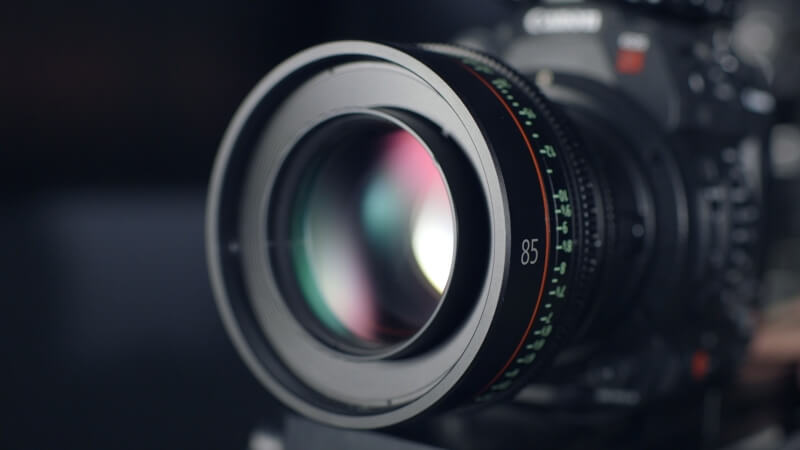
How To Keep Your Camera Strap From Fading
Within the first few moments of embarking on a photographic journey, your camera strap not only becomes a part of your gear but also an

Cleaning your camera lens is like polishing the window to the world. To capture breathtaking photos, you need a clean and clear lens.
In this comprehensive guide, we’ll delve deeper into the art of how to clean camera lens, providing you with valuable insights and expert techniques.
Start your lens-cleaning journey by closely inspecting the glass.
Look for any visible dirt, dust, or smudges that may be affecting your shots.
Using a magnifying glass or a suitable light source can help you spot even the tiniest imperfections.
A thorough inspection is the first step in ensuring your lens is in prime condition.
Take your time to examine the entire lens surface, paying attention to any areas that appear hazy or marred by fingerprints.
For loose particles and dust, an air blower is your best friend. With a gentle blast of air, you can dislodge unwanted debris without the risk of scratching your lens.
To use an air blower effectively, follow these steps:
Selecting the right brush is crucial. A soft brush, designed for camera lens cleaning, can delicately sweep away dust and debris without causing any harm.
Avoid using hard brushes or materials that may scratch the lens surface.
When using a soft brush:
Invest in lens cleaning paper or microfiber cloth specifically designed for camera lenses. These materials are not only gentle but also lint-free, ensuring a pristine lens surface after cleaning.
Microfiber cloths are particularly effective for removing smudges and fingerprints. They have tiny fibers that can reach into crevices and lift away oils and dirt.
Clean your lens with a microfiber cloth:
Using a high-quality lens cleaning fluid, apply it sparingly to the cleaning paper or cloth. Be cautious not to saturate the surface, as excessive moisture could seep into the lens.
When applying cleaning fluid:
To ensure thorough cleaning and prevent streaks, gently wipe the lens in circular motions, starting from the center and moving outward. This technique guarantees a spotless finish.
When wiping in circular motions:
Pay special attention to the edges and corners of the lens, as they can harbor dust and dirt. A cotton swab or a small brush can be used to reach these tight spots.
When cleaning edges and corners:
Avoid using harmful substances like alcohol or acetone, which can damage lens coatings. Stick to recommended lens cleaning solutions for optimal results.
When choosing a cleaning solution:
When your lens is not in use, always cap it to prevent dust and dirt from settling on the glass. This simple habit can go a long way in maintaining lens cleanliness.
Proper lens protection includes:
Proper storage is key to keeping your lens clean for future adventures. Store it in a clean and dry environment, preferably within a padded camera bag or case, to minimize exposure to contaminants.
When storing your lens:
In the world of photography, a clean camera lens is your gateway to capturing stunning moments. Mastering the art of how to clean camera lens is essential for photographers of all levels.
By following these 10 expert tips, you’ll not only achieve crystal-clear photos but also extend the lifespan of your valuable camera equipment.
So, remember, the next time you pick up your camera, start with a clean lens, and watch your photography skills soar to new heights. Clean lenses lead to clear visions!
Maintaining a clean lens is an ongoing practice that will enhance your photography experience and ensure that you’re always ready to capture the beauty of the world through your camera.
So, go ahead, take care of your lens, and let your creativity shine through every click of the shutter.
FAQ 1: Is it necessary to clean my camera lens frequently?
Answer: Yes, regular lens cleaning is essential to ensure your photos remain sharp and clear. Dust, smudges, and debris can affect image quality, so it’s advisable to clean your lens before each photography session.
FAQ 2: Can I use household cleaning products like glass cleaner to clean my camera lens?
Answer: No, it’s not recommended. Household cleaning products may contain harsh chemicals that can damage the lens coatings. Stick to specialized lens cleaning solutions designed for camera lenses to ensure safe and effective cleaning.
FAQ 3: How often should I inspect my camera lens for dirt and smudges?
Answer: Lens inspection should be a routine part of your photography maintenance. Check your lens for dirt and smudges before every shoot to catch any issues early and ensure your photos are pristine.
FAQ 4: What’s the best way to protect my lens when it’s not in use?
Answer: When your lens is not in use, always cap it to prevent dust and dirt from settling on the glass. Additionally, consider using a lens hood for added protection against accidental impacts and stray light.
FAQ 5: How can I keep my camera strap clean?
Answer: Keeping your camera strap clean is important to prevent it from transferring dirt and oils to your hands and, eventually, to your camera lens.
To clean your camera strap, remove it from the camera and follow the manufacturer’s care instructions.
Typically, you can gently hand wash it with mild soap and water, rinse thoroughly, and allow it to air dry. Once it’s clean and dry, reattach it to your camera, ensuring that it’s free from any dirt or debris that could affect your lens.


Within the first few moments of embarking on a photographic journey, your camera strap not only becomes a part of your gear but also an

The moment you sling your camera strap over your shoulder, it becomes more than an accessory; it’s your camera’s lifeline, a bridge between you and

When it comes to photography gear, the camera strap might not be the first thing that springs to mind. Yet, this humble accessory is the

Your camera strap might seem like a small part of your photography gear, but it’s the lifeline that keeps your precious camera from taking a

Within the first few moments of embarking on a photographic journey, your camera strap not only becomes a part of your gear but also an

The moment you sling your camera strap over your shoulder, it becomes more than an accessory; it’s your camera’s lifeline, a bridge between you and

When it comes to photography gear, the camera strap might not be the first thing that springs to mind. Yet, this humble accessory is the

Your camera strap might seem like a small part of your photography gear, but it’s the lifeline that keeps your precious camera from taking a
Copyright © 2024 photocamerastrap. All Rights Reserved.